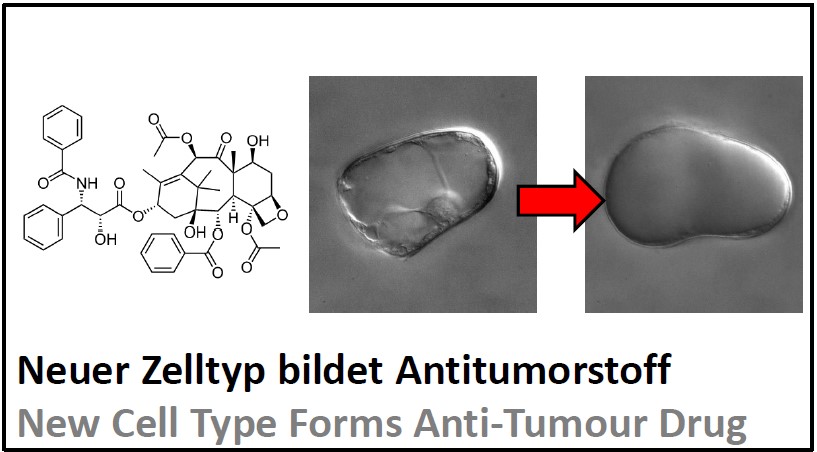2022 07: Taxol aus Zellkultur
 |
What was the question behind this work? There are some estimated 1 million compounds specific for plants. Most of them are made to manipulate other organsims - either as signals or as defence compounds - plants cannot run away, if they do not like the situation. Many of these compounds are medically active, for instance the alkaloid taxol that is efficient against cancer cells and plays an important role in chemotherapy. It is produced by the very rare Pacific Yew, that was shifted to the verge of extinction, because one treatment needs 30 trees. Alternatively, taxol can meanwhile be produced by Plant Cell Fermentation, successfully conducted by Phyton in Ahrensburg. Around half of the world demand can be produced in a sustainable manner. However, the cells grow slowly and a production cycle needs many months. Sometimes, the cells do not feel like producing taxol. Therefore, a cooperation, funded by the German Ministry of Science, strived to understand the cellular base of taxol synthesis. How did we address the question? Using advanced microscopy in combination with chemical analytics and measurements of taxol synthesis genes, we investigated the Yes cell cultures used by Phyton and probed taxol formation by specific compounds. What did we find? We discovered a new cell type, which we baptised "shiny cells" because of the glossy appearance of their vacuoles. These cells were responsible for taxol formation. We could show that these cells were endowed with worm-like mitochondria, more peroxisomes and bundled actin filaments, all early events heralding ensuing cellular suicide. From earlier research we knew that these processes can be silenced by the plant hormone auxin and stimulated by the membrane located NADPH oxidase Respiratory burst oxidase Homologue (RboH). In fact, we could show that the formation of "shiny cells" could be inhibited by auxin, but promoted by aluminium, an activator of RboH. Since we know now the cellular mechanisms, we have found levers to boost the formation of taxol in the bio-fermenters. Publication: 185. Manz C, Raorane ML, Maisch J, Nick P (2022) Switching Cell Fate by the Actin-Auxin Oscillator in Taxus – Cellular Aspects of Plant Cell Fermentation. Plant Cell Rep 41, 2363-2378 - pdf
|
